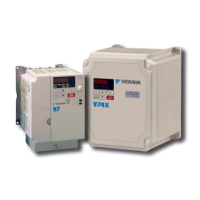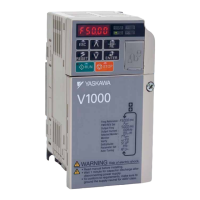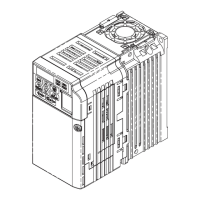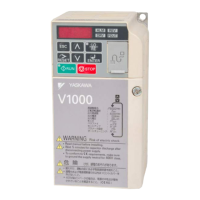n
Motor Rotates in One Direction Only
Cause Possible Solutions
The drive prohibits reverse rotation.
• Check parameter b1-04.
•
Set the drive to allow the motor to rotate in reverse (b1-04 = “0”).
A Reverse run signal has not been entered, although
3-Wire sequence is selected.
• Make sure that one of the input terminals S3 to S7 used for the 3-Wire sequence has been
set for reverse.
n
Motor is Too Hot
Cause Possible Solutions
The load is too heavy.
If the load is too heavy for the motor, the motor will overheat as it exceeds its rated torque
value for an extended period of time.
Keep in mind that the motor also has a short-term overload rating in addition to the possible
solutions provided below:
• Reduce the load.
• Increase the acceleration and deceleration times.
• Check the values set for the motor protection (L1-01, L1-02) as well as the motor rated
current (E2-01).
• Increase motor capacity.
The air around the motor is too hot.
• Check the ambient temperature.
• Cool the area until it is within the specified temperature range.
The drive is operating in a vector control mode but
Auto-Tuning has not yet been performed.
• Perform Auto-Tuning.
• Calculate the motor value and reset the motor parameters.
• Change the motor control method to V/f Control (A1-02 = “0”).
Insufficient voltage insulation between motor phases.
When the motor is connected to terminals U/T1, V/T2, and W/T3, voltage surges occur
between the motor coils and drive switching.
Normally, surges can reach up to three times the drive input power supply voltage (600 V for
200 V class, and 1200 V for 400 V class).
• Use a motor with voltage tolerance higher than the max voltage surge.
• Use a motor designed to work specifically with a drive when using a 400 V class unit.
• Install an AC reactor on the output side of the drive.
The motor fan has stopped or is clogged. Check the motor fan.
n
Drive Does Not Allow Selection of Rotational Auto-Tuning
Cause Possible Solutions
The drive is in the incorrect motor
control method for Rotational
Auto-Tuning.
• Check if the drive is set to V/f Control by accident (A1-02 = 0).
• Change the motor control method to Open Loop Vector Control (A1-02 = “2”).
n
Motor Hunting Occurs at Low Speeds
Cause Possible Solutions
Excessive load inertia in Open Loop Vector Control.
• Excess load inertia can cause motor hunting in Open Loop Vector Control due to slow
motor response.
• Increase the speed feedback detection control time constant (n2-02) from its default value
of 50 ms to an appropriate level between 200 and 1000 ms. Adjust this setting in
combination with n2-03 (Feedback Detection Control Time Constant 2).
n
oPE02 Error Occurs when Lowering the Motor Rated Current Setting
Cause Possible Solutions
The motor rated current and the motor no-load current
settings in the drive are incorrect.
The user is trying to set the motor rated current in E2-01 to a value lower than the no-load
current set in E2-03.
• Make sure that value set in E2-01 is higher than E2-03. Setting E2-01 < E2-03 will trigger
an oPE02 error.
• If it is necessary to set E2-01 lower than E2-03, first lower the value set to E2-03, then
change the setting in E2-01 as needed.
n
Overvoltage Occurs When Running at a Constant Speed
Cause Possible Solutions
Excessive load inertia in Open Loop Vector Control.
• Loads with a lot of inertia (fans, etc.) can trigger an overvoltage fault when operating in
Open Loop Vector Control.
• Switch to the V/f motor control method.
• Adjust the values set for the speed feedback detection control time constant (n2-02, n2-03).
6.9 Troubleshooting without Fault Display
282
YASKAWA ELECTRIC SIEP C710606 16C YASKAWA AC Drive – V1000 Technical Manual
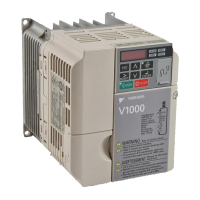
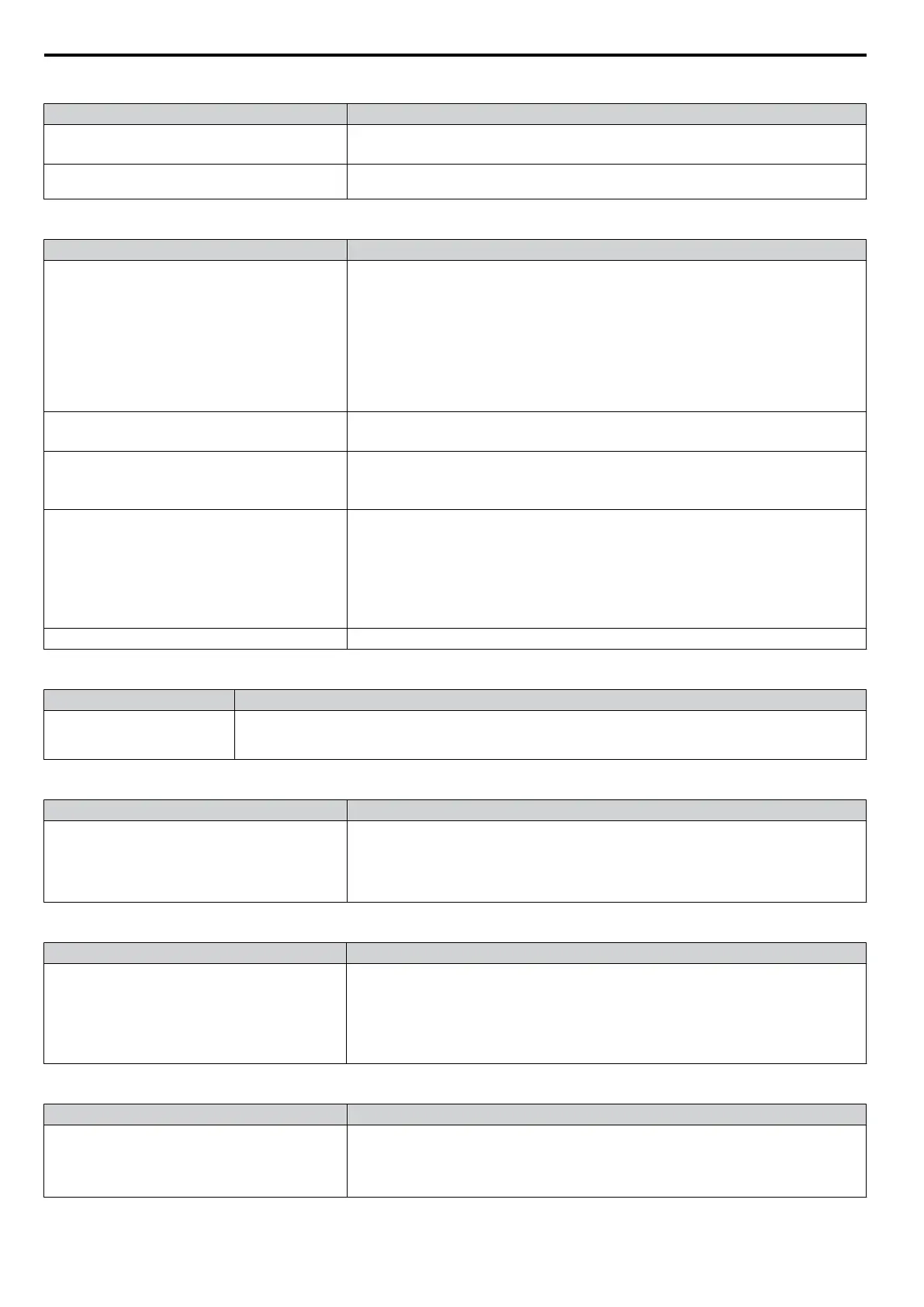